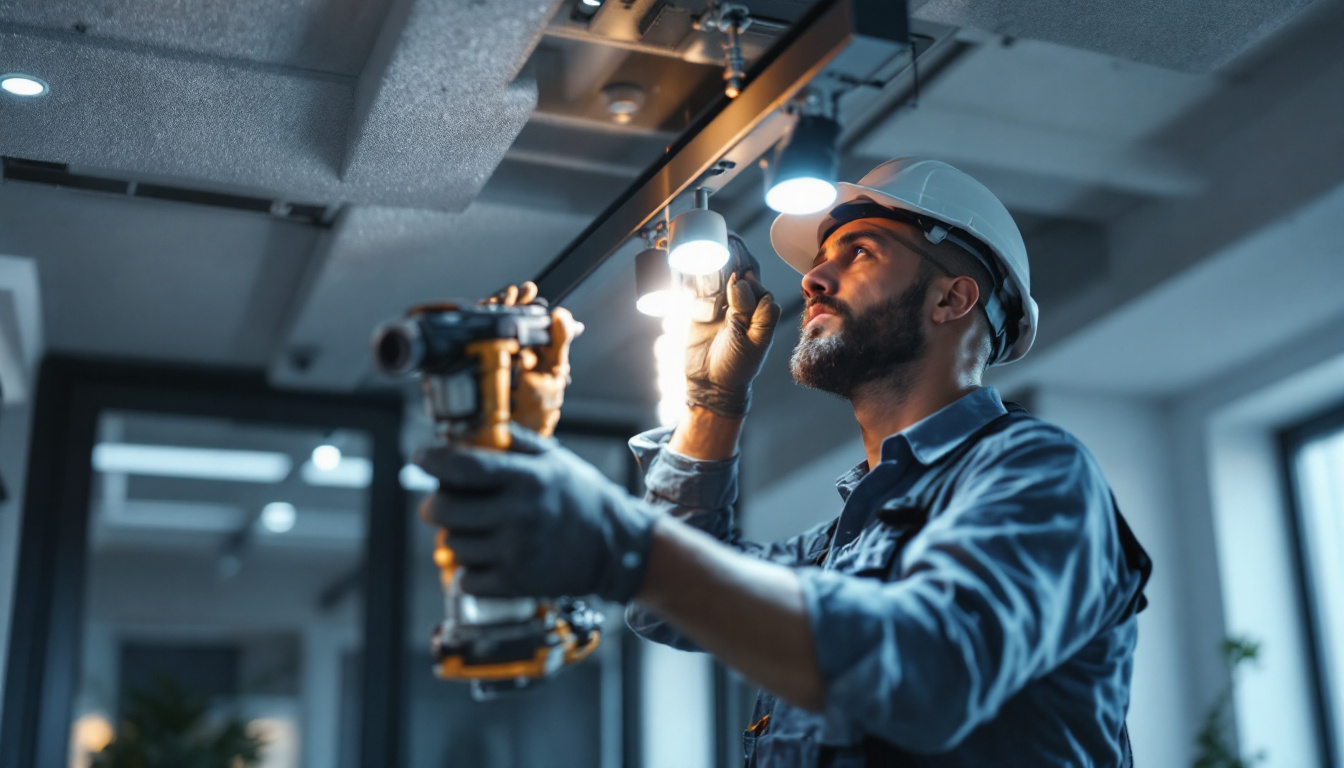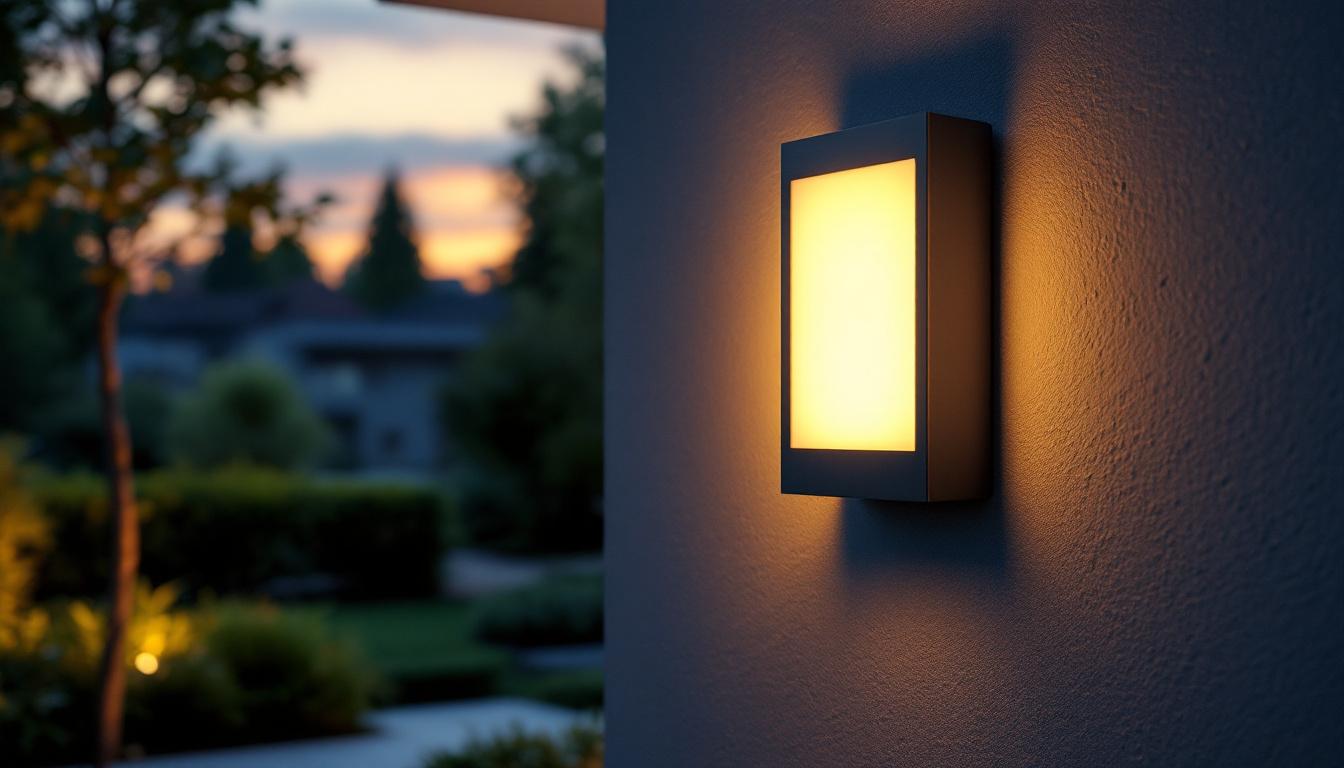
As the lighting industry continues to evolve, LED track lighting has emerged as a popular choice for both residential and commercial applications. Its versatility, energy efficiency, and aesthetic appeal make it an attractive option for many projects. However, lighting contractors face a unique set of challenges when working with LED tracks. Understanding these challenges is essential for delivering high-quality installations and ensuring customer satisfaction.
Before delving into the challenges, it is crucial to understand the components and functionality of LED track systems. These systems typically consist of a track, which serves as the backbone, and various light fixtures that can be mounted along the track. The flexibility of moving fixtures along the track allows for customized lighting arrangements, catering to different needs and preferences. This adaptability not only enhances the aesthetic appeal of a space but also allows for practical adjustments based on the time of day or specific activities taking place, making LED track systems a popular choice in both commercial and residential settings.
LED track lighting systems generally comprise three main components: the track, the fixtures, and the power supply. The track is usually made from aluminum and can be surface-mounted or recessed into ceilings. Fixtures come in various styles, including spotlights, floodlights, and pendants, allowing contractors to choose the best fit for their projects. The power supply is essential for converting standard voltage to the low voltage required by LED lights, ensuring optimal performance. Additionally, many modern systems now include smart technology, enabling users to control brightness and color temperature through mobile apps or voice commands, further enhancing the user experience.
One of the key advantages of LED track lighting is its versatility in installation. Contractors can easily adapt the layout to suit specific spaces, whether it’s a retail environment, art gallery, or residential area. This adaptability can, however, lead to complications if not managed correctly. For instance, ensuring that the track is properly aligned and securely mounted is critical to avoid any safety hazards. Furthermore, the positioning of fixtures can significantly influence the overall ambiance of a room; strategically placed lights can highlight architectural features or artwork, while poorly positioned fixtures may create unwanted shadows or glare. As such, careful planning and consideration during the installation process are vital to achieving the desired lighting effect.
Moreover, the ability to easily reconfigure the lighting setup as needs change is one of the most appealing aspects of LED track systems. In a retail space, for example, a store might want to spotlight new merchandise or seasonal displays, and track lighting allows for quick adjustments without the need for extensive rewiring. This flexibility is not only cost-effective but also promotes a dynamic environment where lighting can evolve alongside the space’s function. As trends in interior design shift, the ability to modify lighting arrangements can keep a space feeling fresh and modern, making LED track systems an investment that continues to pay off over time.
While LED track systems offer numerous benefits, they also present several challenges for lighting contractors. Identifying and addressing these challenges can significantly impact the success of a project.
One of the foremost challenges is ensuring compatibility between the track, fixtures, and power supply. Different manufacturers may have varying specifications, which can lead to confusion during installation. Incompatible components can result in flickering lights, inadequate brightness, or even complete system failure. Contractors must conduct thorough research and ensure that all components are compatible before commencing installation. This often involves consulting with manufacturers and cross-referencing specifications, which can be time-consuming but is essential for a successful outcome. Furthermore, contractors may need to educate clients about the importance of using compatible systems, as clients may have preferences for specific brands or styles that could complicate the installation process.
Electrical wiring is another critical aspect that can pose challenges. LED track lighting systems often require low-voltage wiring, which may differ from traditional lighting systems. Contractors must be well-versed in electrical codes and regulations to ensure safe and compliant installations. Additionally, understanding the load capacity of the circuit is essential to prevent overloading, which can lead to circuit failures or fire hazards. It is also vital for contractors to assess the existing electrical infrastructure of the building, as older systems may not support the demands of modern LED technology. This may necessitate upgrades or modifications to the wiring, adding to the project’s complexity and cost. Moreover, contractors should remain updated on evolving electrical standards, as regulations can change, impacting installation practices and safety protocols.
LEDs are known for their energy efficiency, but they still generate some heat. Proper heat management is crucial to ensure the longevity and performance of the lighting system. Contractors must consider the placement of fixtures, ensuring adequate airflow and avoiding overcrowding on the track. Failure to manage heat effectively can lead to reduced lifespan and performance of the LED fixtures. In addition, contractors should be aware of the thermal properties of the materials used in the surrounding environment, as certain materials may retain heat and exacerbate temperature issues. Implementing heat sinks or selecting fixtures designed with better thermal management can mitigate these risks. Furthermore, educating clients on the importance of regular maintenance and monitoring can help in identifying potential heat-related issues before they escalate, ensuring that the lighting system remains efficient and effective over time.
Designing an effective lighting layout is a fundamental aspect of any installation project. With LED track lighting, the design process can be both exciting and challenging.
One of the primary goals of lighting design is to create the right atmosphere for a space. Contractors must consider the intended use of the area when planning the layout. For instance, a retail store may require bright, focused lighting to highlight products, while a restaurant may benefit from softer, ambient lighting to create a cozy atmosphere. Striking the right balance between functionality and aesthetics is crucial for a successful installation.
Another design consideration is the adjustability of fixtures. The ability to reposition fixtures along the track allows for dynamic lighting arrangements, but it can also complicate the design process. Contractors must ensure that the fixtures can be easily adjusted without compromising the overall design. This may involve additional planning and communication with clients to understand their preferences and requirements.
Cost is always a significant factor in any lighting project. With LED track systems, managing costs can be particularly challenging due to the initial investment required for high-quality components.
While LED lighting systems typically have a higher upfront cost compared to traditional lighting, they offer long-term savings through reduced energy consumption and lower maintenance costs. Contractors must effectively communicate these benefits to clients, helping them understand the value of investing in quality products. This can sometimes involve overcoming initial resistance to higher costs.
In addition to product costs, contractors must also consider labor costs when budgeting for installation. The complexity of the installation process can impact labor hours, leading to higher costs. Accurate project estimation is essential to avoid budget overruns and ensure profitability. Contractors should develop a clear scope of work and timeline to manage client expectations effectively.
Compliance with local regulations and safety standards is paramount in any electrical installation. This is particularly true for LED track lighting, where specific guidelines may apply.
Lighting contractors must be familiar with local building codes and regulations governing electrical installations. These codes can vary significantly from one location to another, making it essential to stay informed about the latest requirements. Non-compliance can lead to fines, project delays, and potential safety hazards, underscoring the importance of thorough research and planning.
Safety is a top priority during installation. Contractors must implement safety measures to protect themselves and their clients. This includes using appropriate personal protective equipment (PPE), following electrical safety protocols, and ensuring that all equipment is in good working condition. Proper training and awareness of safety standards can mitigate risks and contribute to a successful installation.
After installation, ongoing maintenance and support are crucial for ensuring the longevity and performance of LED track lighting systems. Contractors should be prepared to address any issues that may arise post-installation.
Educating clients about the maintenance of their LED track lighting systems is essential. Contractors should provide guidance on how to care for the fixtures, including cleaning and troubleshooting common issues. This empowers clients to take an active role in maintaining their lighting systems, ultimately leading to better performance and satisfaction.
In addition to education, offering ongoing support can enhance client relationships and foster trust. Contractors should be available to address any questions or concerns that may arise after installation. Providing a warranty or service agreement can also reassure clients, demonstrating a commitment to quality and customer satisfaction.
The lighting industry is continually evolving, with new technologies emerging regularly. Staying abreast of these advancements can help contractors overcome challenges and enhance their service offerings.
Smart lighting technology is becoming increasingly popular, allowing for greater control and customization of lighting systems. Contractors should familiarize themselves with smart lighting solutions that can be integrated into LED track systems. This knowledge can open up new opportunities for projects and provide clients with innovative solutions that enhance their lighting experience.
Keeping up with industry trends and innovations is vital for contractors looking to stay competitive. Regularly attending trade shows, workshops, and training sessions can provide valuable insights into new products and techniques. Networking with other professionals in the field can also foster collaboration and knowledge sharing, ultimately benefiting contractors and their clients.
LED track lighting offers numerous advantages, but it also presents several challenges for lighting contractors. From compatibility issues and electrical considerations to design complexities and cost management, understanding these challenges is essential for successful installations. By staying informed about industry trends, embracing technological advancements, and prioritizing client education and support, contractors can navigate these challenges effectively. Ultimately, a commitment to quality and customer satisfaction will lead to successful projects and lasting client relationships.
Ready to tackle the challenges of LED track lighting with confidence? Choose LumenWholesale for your lighting needs and experience the difference that quality, affordability, and convenience can make. Our spec-grade lighting products meet the highest industry standards, ensuring you deliver successful projects every time. Say goodbye to inflated markups and hello to unbeatable wholesale prices, with the added benefit of free shipping on bulk orders. Don’t let cost and complexity hold you back. Elevate your lighting installations today by visiting Wholesale Lighting at the Best Value and take the first step towards seamless, cost-effective lighting solutions that don’t compromise on quality.

Discover why the 120V60W light bulb is a must-have for lighting contractors.

Discover how modern outdoor flush mount lights can be a game-changer for lighting contractors looking to win more bids.

Discover how to future-proof your lighting projects with 40 Watt Type B bulbs.

Discover essential resources and expert tips from leading lighting contractors to master emergency lighting solutions.